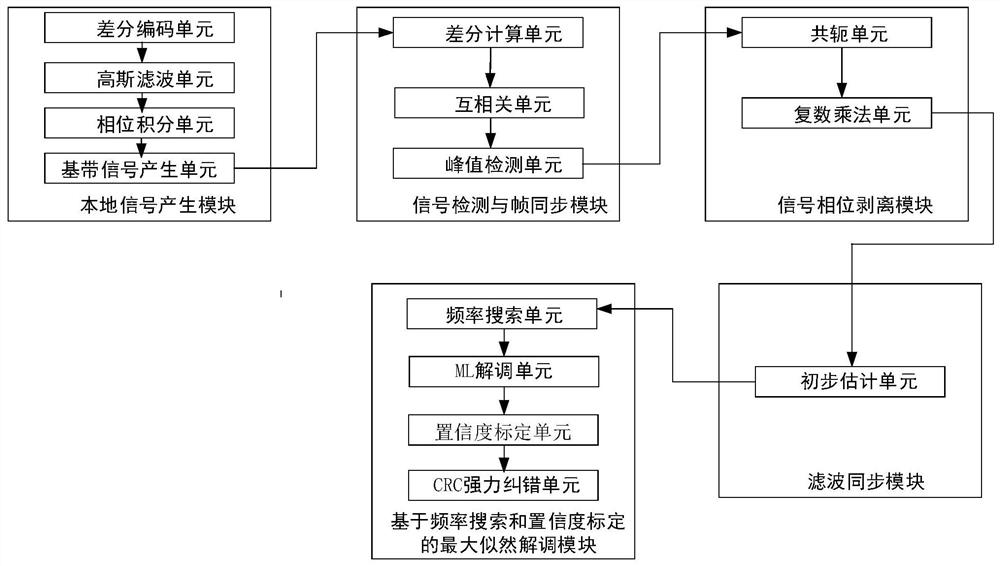AIS baseband signal receiving system and method suitable for satellite-borne environment
A baseband signal and receiving system technology, applied in the modulation carrier system, frequency modulation carrier system, transmission system, etc., can solve problems such as limited coverage of shore-based AIS, low signal-to-noise ratio, and inapplicability of AIS signals
- Summary
- Abstract
- Description
- Claims
- Application Information
AI Technical Summary
Problems solved by technology
Method used
Image
Examples
Embodiment 1
[0071] like figure 1 As shown, the present invention provides a kind of AIS baseband signal receiving system that is applicable to space-borne environment, comprises the local signal generation module that connects in sequence, signal detection and frame synchronization module, signal phase stripping module, filter synchronization module and based on frequency search and The maximum likelihood demodulation module for confidence calibration; the local signal generation module is used to use the 24bits training sequence and 8bits start mark contained in the AIS message as the synchronization sequence of the signal, and perform GMSK modulation on the synchronization sequence to obtain local I and Q signals ; The signal detection and frame synchronization module is used to perform cross-correlation calculations based on the phase variation of the local I and Q signals to obtain the initial sample point of the signal; the signal phase stripping module is used to analyze the local si...
Embodiment 2
[0080] like figure 2 As shown, the present invention provides a kind of AIS baseband signal receiving method applicable to spaceborne environment, and its implementation method is as follows:
[0081] S1, local signal generation: use the 24bits training sequence and 8bits start mark contained in the AIS message as the synchronous sequence of the signal, and carry out GMSK modulation to the synchronous sequence to obtain the local I, Q signal, and its implementation method is as follows:
[0082] S101, using the 24bits training sequence and the 8bits start mark contained in the AIS message as the synchronization sequence of the signal, and performing differential encoding processing on the synchronization sequence;
[0083] S102. Use a Gaussian low-pass filter to smooth the phase path of the differentially encoded signal;
[0084] S103. Integrate the smoothed signal;
[0085] S104. Using GMSK modulation, taking cosine and sine respectively from the integrated signal phase to...
PUM
 Login to View More
Login to View More Abstract
Description
Claims
Application Information
 Login to View More
Login to View More - R&D
- Intellectual Property
- Life Sciences
- Materials
- Tech Scout
- Unparalleled Data Quality
- Higher Quality Content
- 60% Fewer Hallucinations
Browse by: Latest US Patents, China's latest patents, Technical Efficacy Thesaurus, Application Domain, Technology Topic, Popular Technical Reports.
© 2025 PatSnap. All rights reserved.Legal|Privacy policy|Modern Slavery Act Transparency Statement|Sitemap|About US| Contact US: help@patsnap.com



